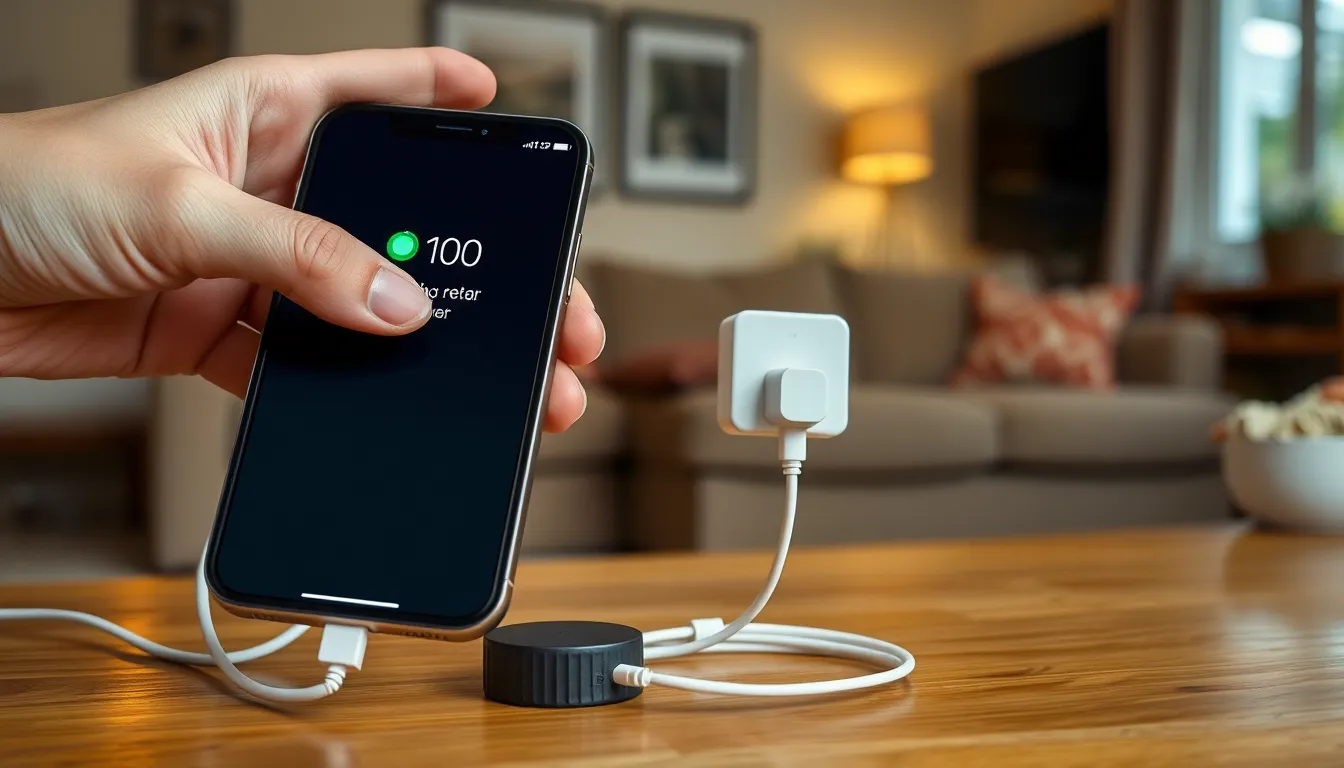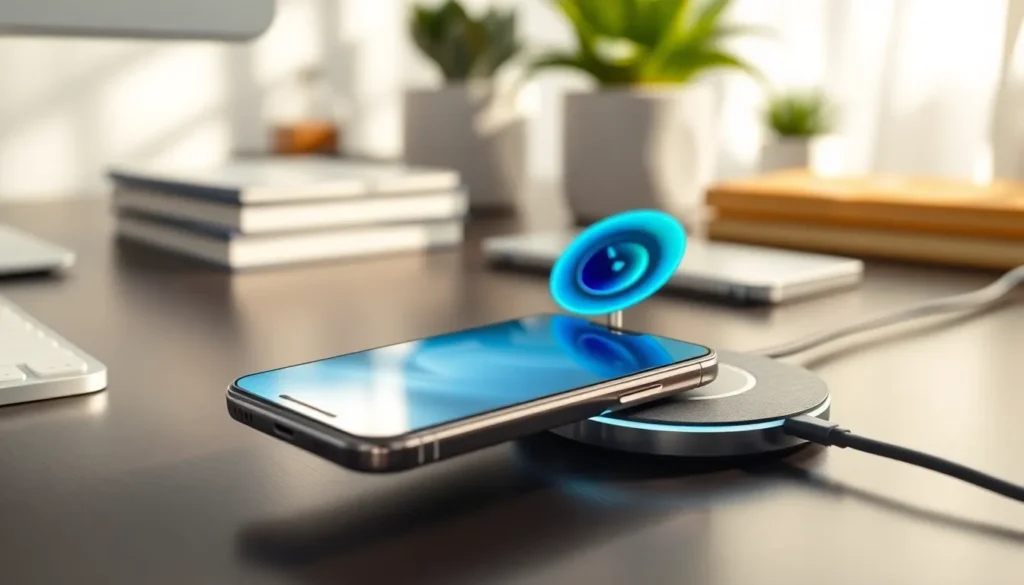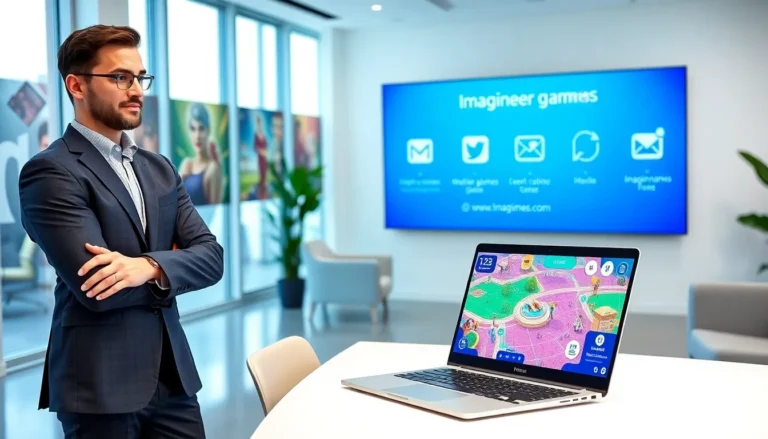Picture this: you’re all set for a day of adventure, but your iPhone decides to play hard to get. It’s like that friend who always “forgets” their wallet when it’s time to split the bill. Frustrating, right? Charging issues can turn your trusty device into an expensive paperweight, leaving you disconnected when you need it most.
Table of Contents
ToggleCommon Charging Issues
Charging issues can be frustrating for iPhone users. Several common problems often affect the device’s ability to charge effectively.
Check Your Charging Cable
Inspecting the charging cable is essential. Look for frays, breaks, or any signs of wear. A damaged cable can prevent a proper connection. Using an official Apple cable or a certified alternative ensures compatibility. Test the cable with another device to determine if it’s functioning. A working cable signifies the issue lies elsewhere.
Inspect Your Charging Port
Examining the charging port can uncover hidden culprits. Dust and debris often accumulate and obstruct connections. Use a flashlight to check the port for any buildup. A can of compressed air can help clean out any particles. If the port shows signs of damage or corrosion, professional repair might be necessary. Ensuring a clean and secure connection allows for optimal charging performance.
Troubleshooting Steps

Charging issues can often be resolved with a few simple troubleshooting steps. Below are methods to help restore charging functionality.
Restart Your iPhone
Restarting an iPhone can refresh its system and resolve charging problems. To restart, press and hold the side button along with one of the volume buttons until the slider appears. After sliding to power off, the device remains off for a few seconds before it reboots. This quick reset eliminates minor software glitches that might interfere with charging.
Try a Different Power Source
Using an alternative power source can determine if the issue lies with the current one. Plugging the iPhone into a different wall adapter, USB port, or power bank can yield different results. Observations of whether the device charges with another power source provide critical insight. If it charges, the initial power source may require inspection or replacement.
Alternative Charging Methods
Exploring alternative charging methods can provide additional solutions for iPhone users. These methods often enhance convenience and flexibility.
Wireless Charging
Wireless charging uses electromagnetic fields to transfer energy to compatible devices. Many newer iPhone models support Qi wireless charging. To charge, simply place the iPhone on a wireless charging pad or stand. Make sure the charger is connected to a power source. Some users find this method easier, as it reduces wear on charging ports. Additionally, wireless charging pads often come in various designs, making them suitable for different environments.
Using a Power Bank
Power banks offer a portable charging solution for iPhones when on the go. Many power banks utilize USB ports to charge the device. Selecting a power bank with sufficient capacity, typically 10,000 mAh or higher, ensures multiple charges. Users can carry them during travel or outings, providing a reliable backup source. Charging the power bank before use enhances its effectiveness. Compatibility with various cables allows flexibility in charging multiple devices if needed.
Best Practices for iPhone Charging
Charging an iPhone effectively involves specific practices aimed at maintaining battery life and ensuring optimal performance.
Keeping Your Battery Healthy
Avoid exposing the battery to extreme temperatures. High heat can damage battery components, while extreme cold may temporarily reduce performance. Charge the iPhone between 20% and 80% to prolong battery lifespan. Doing so minimizes stress on the battery system, enhancing longevity. Additionally, activating battery optimization features can help to regulate charging habits. Users should check their settings for features like optimized battery charging, which learns user habits and reduces excessive charge cycles. Monitoring battery health regularly provides insights into performance issues or potential replacements.
Using Certified Accessories
Utilize certified accessories for charging to enhance safety and efficiency. Using an Apple-certified cable and adapter prevents damage from incompatible devices. Certified accessories undergo rigorous testing to ensure they meet iPhone standards. Charging speed can vary widely with non-certified products, potentially leading to prolonged charging times. Always confirm that the charging accessory displays MFi certification, indicating compatibility with Apple products. Opting for reliable power sources helps prevent potential overheating or battery damage, ensuring hassle-free charging experiences.
Dealing with iPhone charging issues can be frustrating but understanding the root causes and solutions makes it manageable. By inspecting cables and ports users can often identify the problem quickly. Trying different power sources or alternative charging methods like wireless charging and power banks adds flexibility to the charging experience.
Maintaining battery health is crucial for long-term performance. Following best practices ensures the iPhone remains charged and ready for use when needed. With the right approach users can eliminate charging woes and enjoy a seamless experience with their devices.








